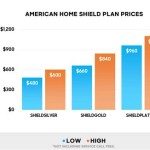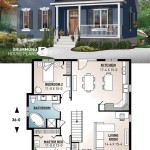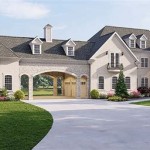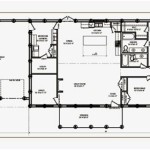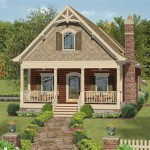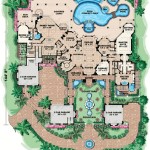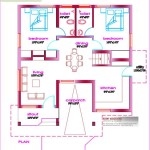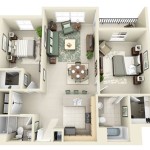Cottage and Bungalow House Plans: A Comprehensive Guide
Cottage and bungalow house plans represent two distinct, yet often overlapping, architectural styles that evoke feelings of warmth, comfort, and a connection to nature. Both styles prioritize efficient space utilization, aesthetic appeal, and a seamless integration with their surroundings. Understanding the nuances of each style, their common features, and the variations available is crucial for prospective homeowners or builders seeking to create a dwelling that embodies these characteristics.
While both styles emphasize casual living and comfortable spaces, their origins and defining features differ. Cottages traditionally evolved as modest dwellings for rural populations, emphasizing practicality and affordability. Bungalows, on the other hand, emerged as a distinct architectural movement in the late 19th and early 20th centuries, influenced by the Arts and Crafts movement and characterized by low-pitched roofs, wide eaves, and an emphasis on natural materials.
Careful consideration must be given to the selection of a house plan that aligns with individual needs, budget constraints, and the specific characteristics of the building site. This article will explore the key elements of cottage and bungalow styles, highlighting their unique features and providing guidance on selecting the appropriate house plan.
Key Features of Cottage House Plans
Cottage house plans are characterized by their charm, informality, and emphasis on creating a cozy and inviting atmosphere. Often inspired by traditional European architecture, these homes typically feature smaller footprints and a focus on maximizing space within. Here are some defining characteristics:
1. Asymmetrical Design: Unlike more formal architectural styles, cottage house plans often embrace asymmetry. This can be seen in the arrangement of windows, doors, and rooflines, creating a more organic and less predictable appearance. This asymmetry contributes to the overall charm and uniqueness of each cottage design.
2. Steep Roof Pitches: A hallmark of cottage architecture is the presence of steep roof pitches, often with gables and dormers. These steep roofs not only add visual interest but also provide valuable attic space that can be used for storage or converted into living areas. The use of dormers further enhances the available space and introduces natural light into the upper levels.
3. Natural Materials: Cottage house plans often incorporate natural materials such as wood siding, stone accents, and shingle roofing. These materials contribute to the rustic and organic feel of the cottage and help it blend seamlessly with its natural surroundings. The use of natural materials also promotes sustainability and creates a sense of connection to the environment.
4. Emphasis on Outdoor Living: Cottages often feature inviting outdoor spaces such as porches, patios, and gardens. These spaces extend the living area and encourage residents to connect with nature. The integration of indoor and outdoor spaces is a key element of cottage design, creating a seamless transition between the two.
5. Intimate Spaces: Cottage house plans typically prioritize intimate and cozy living spaces. Rooms are often smaller and more focused on functionality rather than grandeur. This emphasis on intimacy creates a sense of warmth and comfort, making the cottage a welcoming and relaxing retreat.
The use of these features should be carefully considered in relation to the specific site and local building codes. Adapting a cottage plan to meet modern building standards while retaining its inherent charm requires careful planning and attention to detail.
Key Features of Bungalow House Plans
Bungalow house plans are known for their low-pitched roofs, wide overhanging eaves, and emphasis on horizontal lines. Originating in India and popularized in the United States during the early 20th century, bungalows represent a distinct architectural style that emphasizes simplicity, functionality, and a connection to nature. Here are some of their defining traits:
1. Low-Pitched Roofs with Wide Eaves: The low-pitched roof is perhaps the most recognizable characteristic of a bungalow. Combined with wide overhanging eaves, this roof design provides ample protection from the elements and creates a shaded porch area. The extended eaves also contribute to the horizontal emphasis of the bungalow style.
2. Prominent Front Porch: A spacious front porch is another defining feature of bungalows. This porch serves as an outdoor living space, providing a welcoming area for residents and visitors to relax and interact. The porch is often supported by sturdy columns or piers, further emphasizing the horizontal lines of the structure.
3. Open Floor Plans: Bungalows often feature open floor plans that connect the living room, dining room, and kitchen. This open layout creates a sense of spaciousness and promotes social interaction. The use of minimal interior walls enhances the flow of natural light and creates a more airy and inviting atmosphere.
4. Built-in Features: Bungalows often incorporate built-in features such as bookshelves, cabinets, and window seats. These built-ins maximize space utilization and add character to the interior. The design of these features often reflects the Arts and Crafts aesthetic, with simple lines and natural materials.
5. Horizontal Emphasis: Bungalow architecture prioritizes horizontal lines, creating a sense of stability and groundedness. This emphasis is evident in the low-pitched roof, wide eaves, and the use of horizontal siding materials. The horizontal lines also contribute to the bungalow's integration with its natural surroundings.
Careful consideration must be given to the orientation of the bungalow on the site to maximize the benefits of the porch and eaves, particularly in relation to sunlight and prevailing winds. The design should also consider the use of appropriate landscaping to further enhance the connection with nature.
Choosing the Right House Plan: Considerations and Variations
Selecting the right house plan, whether cottage or bungalow, requires careful consideration of several factors, including budget, site conditions, lifestyle, and aesthetic preferences. Furthermore, numerous variations and hybrid designs exist, blurring the lines between these two styles. It is essential to understand these variations to make an informed decision.
1. Budget: The size and complexity of the house plan will significantly impact the overall cost of construction. Smaller, simpler designs will generally be more affordable than larger, more elaborate ones. Consider the cost of materials, labor, and any necessary site preparation when evaluating different house plans.
2. Site Conditions: The topography, soil conditions, and climate of the building site will influence the suitability of different house plans. For example, a steeply sloped site may require a different foundation design than a flat site. Climate considerations include factors such as sun exposure, wind patterns, and rainfall, which can impact energy efficiency and structural integrity.
3. Lifestyle: Consider your lifestyle and how you plan to use the space. Do you need a lot of space for entertaining? Do you prefer open living areas or more private spaces? How many bedrooms and bathrooms do you require? These lifestyle considerations will help you narrow down your options and select a house plan that meets your specific needs.
4. Aesthetic Preferences: Both cottage and bungalow styles offer a range of aesthetic variations. Cottages can range from rustic and charming to more refined and elegant. Bungalows can incorporate elements of the Arts and Crafts movement, Prairie School architecture, or even modern design. Consider your aesthetic preferences and choose a house plan that reflects your personal style.
5. Variations and Hybrid Designs: The distinction between cottage and bungalow styles is not always clear-cut. Many house plans incorporate elements of both styles, creating hybrid designs that blend the best features of each. For example, a cottage-style house may feature a low-pitched roof and wide eaves, while a bungalow may incorporate asymmetrical design elements or steeper roof pitches. These hybrid designs offer a wide range of possibilities for creating a unique and personalized home.
6. Sustainability: Incorporating sustainable design principles into a cottage or bungalow house plan can significantly reduce its environmental impact and operating costs. Consider features such as passive solar heating and cooling, energy-efficient windows and doors, and sustainable building materials. These features can improve the comfort and livability of the home while also reducing its carbon footprint.
7. Local Building Codes: All house plans must comply with local building codes and regulations. These codes cover a wide range of issues, including structural integrity, fire safety, and energy efficiency. Consult with a qualified architect or builder to ensure that your chosen house plan meets all applicable codes.
Ultimately, the selection of a cottage or bungalow house plan is a personal decision that should be based on a careful evaluation of all these factors. By understanding the key features of each style, considering your individual needs and preferences, and working with qualified professionals, you can create a home that is both beautiful and functional.

Bungalow Floor Plans Style Homes Arts And Crafts Bungalows Craftsman House

Small Bungalow Cottage House Plan With Porches And Photos

Bungalow Floor Plans Style Homes Arts And Crafts Bungalows House Design

Plan No R 856 C 1918 Cottage House By A E Stillwell Vintage Bungalows Plans Transitio Bungalow Floor

Traditional Style With 3 Bed 2 Bath Car Garage House Plans Dream Craftsman

Cottage House Plan With Porches By Max Fulbright Designs

Bungalow Floor Plans Style Homes Arts And Crafts Bungalows

Bungalow Floor Plans Style Homes Arts And Crafts Bungalows House

Bungalow Style House Plans Cottage America S Best Blog

Bungalow Style House Plan 1 Beds Baths 960 Sq Ft 48 666 Houseplans Com

